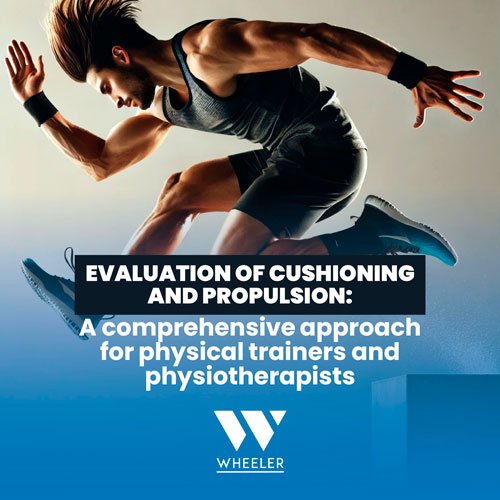Evaluation of Cushioning and Propulsion: A Comprehensive Approach for Physical Trainers and Physiotherapists
In the field of sports performance, the evaluation of cushioning and propulsion is essential for enhancing athletic ability and ensuring injury prevention. These two mechanisms are critical for improving movement quality and minimizing the risk of injuries, especially in high-impact sports. Efficient cushioning and propulsion are the foundation for success in sports that require dynamic and explosive actions.
This article explores the significance of cushioning and propulsion in sports performance, the role of jump tests in evaluating these mechanisms, and the importance of utilizing advanced tools and technologies. It provides practical insights for physical trainers and physiotherapists who seek to optimize movement quality and reduce injury risks in their athletes.
The Importance of Cushioning and Propulsion
Cushioning and propulsion are integral components of the running and jumping cycle. Cushioning refers to the body’s ability to absorb impact during landing, while propulsion is the force generated to push upward or forward. Both play vital roles in sports performance and injury prevention.
The stretch-shortening cycle (SSC) is a key concept underpinning cushioning and propulsion. This cycle involves an eccentric contraction followed by a concentric contraction, enabling the efficient use of elastic energy stored in muscles. Proper execution of the SSC not only enhances sports performance but also reduces injury risks.
Evaluating Cushioning and Propulsion through Jump Tests
Jump tests are a valuable method for assessing cushioning and propulsion, especially when running evaluations are not feasible. The SSC, first identified in the 1960s, forms the foundation of many widely used jump tests, such as the Bosco protocol, which measures lower-body power. These tests are indispensable for physical trainers and physiotherapists aiming to optimize athletic performance.
Tools for Assessing Cushioning and Propulsion
Advanced tools have revolutionized the way physical trainers and physiotherapists evaluate cushioning and propulsion mechanisms.
- Jump Mats: These devices measure flight time, estimating jump height to evaluate propulsion. However, they cannot fully analyze movement quality or assess the efficiency of the stretch-shortening cycle.
- Force Platforms: Force platforms offer detailed data on ground reaction forces, elastic efficiency, and leg asymmetries. These tools are invaluable for identifying dysfunctions in cushioning or propulsion techniques that could compromise sports performance.
- Sensors and Wearable Devices: Modern sensors provide real-time insights into cushioning, propulsion, jump height, and contact time, allowing for precise analysis and personalized recommendations.
The Countermovement Jump: A Key Jump Test
The countermovement jump (CMJ) is one of the most effective jump tests for evaluating the stretch-shortening cycle, cushioning, and propulsion. By leveraging elastic energy during the eccentric phase, the CMJ provides critical data about sports performance efficiency and rapid force generation. For physiotherapists and physical trainers, this test is a reliable indicator of an athlete’s ability to utilize elastic energy effectively.
Preventing Injuries through Proper Cushioning and Propulsion
Inadequate cushioning or propulsion can significantly increase injury risks. Poor cushioning technique, for example, can lead to joint stress, increasing the likelihood of injuries such as Achilles tendonitis or knee problems. Similarly, inefficient propulsion can reduce jump effectiveness and lead to overuse injuries.
By identifying asymmetries or weaknesses in cushioning and propulsion, physiotherapists and physical trainers can develop targeted training programs to address these issues, ultimately enhancing sports performance and ensuring injury prevention.
Conclusion
Evaluating cushioning and propulsion is indispensable for sports performance optimization and injury prevention. Through jump tests such as the countermovement jump, coupled with advanced tools like force platforms and wearable sensors, physical trainers and physiotherapists can gain a comprehensive understanding of their athletes’ movement quality.
A holistic approach that combines jump tests with cutting-edge technology empowers trainers to enhance the efficiency of the stretch-shortening cycle, design personalized training plans, and minimize injury risks. By focusing on cushioning and propulsion, professionals in the sports field can ensure their athletes achieve peak performance while staying injury-free.
Author


